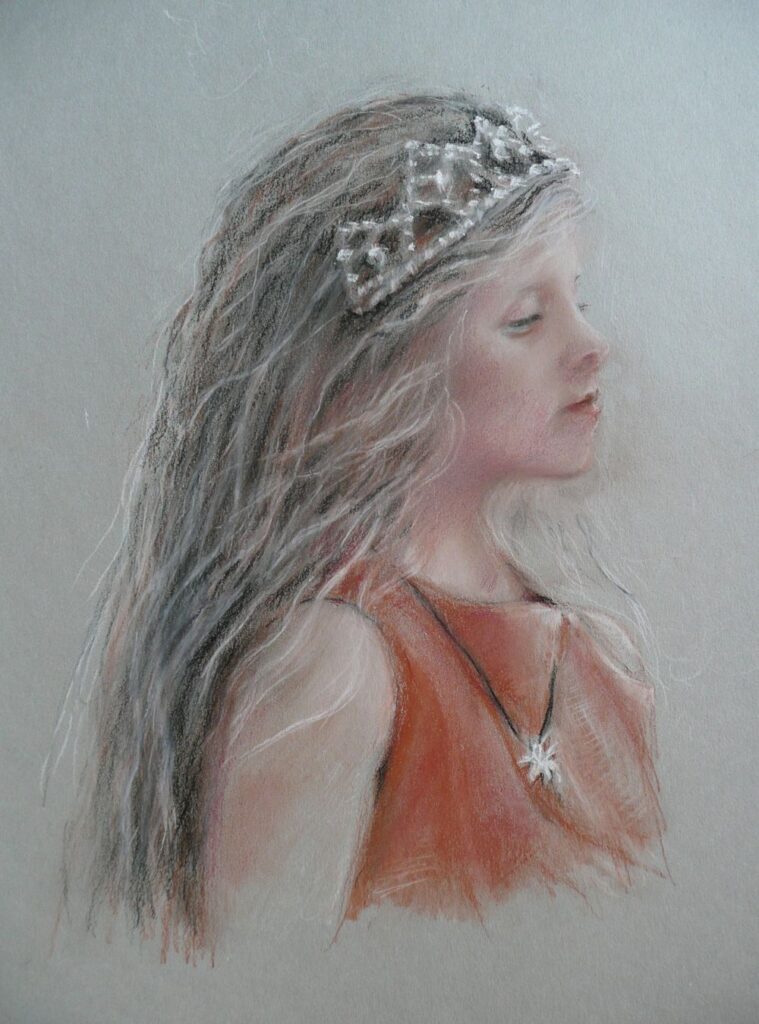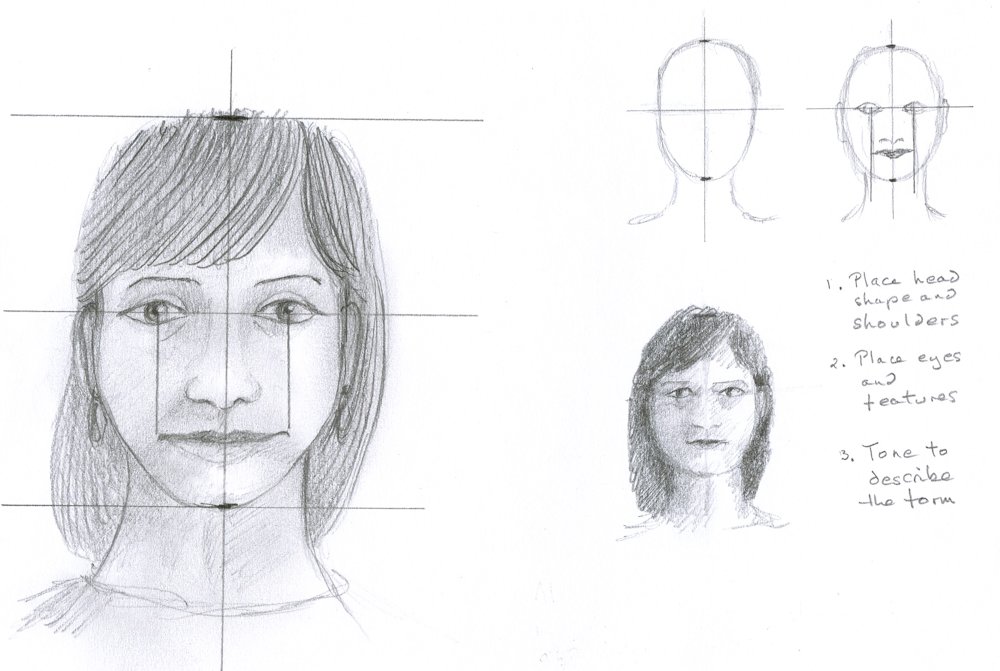Portraits of Older Children Week 2
June 24, 2022

Conte crayon: black, sanguine, white
Plus small additions of blue and crimson pastel pencil
on Rembrandt toned paper; Industrial grey
This week is another drawing session.
To start with this week I’ll screen share some references and we’ll do a few warm up sketches before launching into a more considered drawing for the rest of the morning.Maximum time 5 minutes for each. I will share my screen with you so we can work from the same image.
Probably best to work in soft pencil or charcoal for this and do all four studies on the same sheet (A3 cartridge would be ideal).
For the more considered drawing perhaps try drawing a boy if you chose a girl last week and vice versa. Girls may seem easier because the ear is often hidden by hair. If drawing a profile take time to look at the position of the ear in your reference; it may appear further back than you think.
I mentioned the proportions of the head last week and that in older children these proportions are close to that of an adult. Quite often noses may be slightly shorter and less developed and the only way is to observe the particular reference photo or the sitter closely. Also even in adults these measurements vary a lot between individuals.
Just to recap;
When looking at the full face;
1. look at the over all proportion of the head; i.e. how wide is it compared to its height then draw the head shape, tilted if the head is tilted.
2. draw in the vertical axis of the head and note how this axis changes direction for the neck if the head is on the tilt.
3. Show how the head connects to the body looking carefully at the width of the neck
4. Draw a line through the eyes; this will help with proportions as about half the head will be above and half below when the sitter is looking straight at you and you are at the same height.
5. For the fast sketches place the features roughly then use tone to reveal the form of the head and features. This will be greatly influenced by the lighting.

With the profile face the vertical proportions will be the same but do look at the overall shapes you are presented with first, and then place the ear correctly with noting far back it appears and its relation to the hinge point of the jaw which is just below the lower point of the attachment of the ear.
The three quarter view is beloved by portrait artists as it gives some idea of both profile and full face views. The amount of information on the full face is miniscule if the view is almost profile and likewise information on the profile is short if the face is viewed almost from the front. the axis for three quarter views is best drawn as a curve which we will discuss. If you think of portraiture as another kind of still life you will understand that perspective is every bit as important in portraiture, unless you are going for a cubist style but that is a different course!
For the more considered drawing you may continue with pencil, three crayons on a toned paper or work in colour. Working in monochrome or a with very limited range of colour will help you depict the structures of the head and tonal studies will form the basis for colour work in the following weeks.
Your Drawings;

by Norma

Black conte crayon on pale grey paper by Vivienne

Conte crayon and pastel by Vivienne

Tonal study by Liz

Pastel by Liz

by Virginia

by Virginia